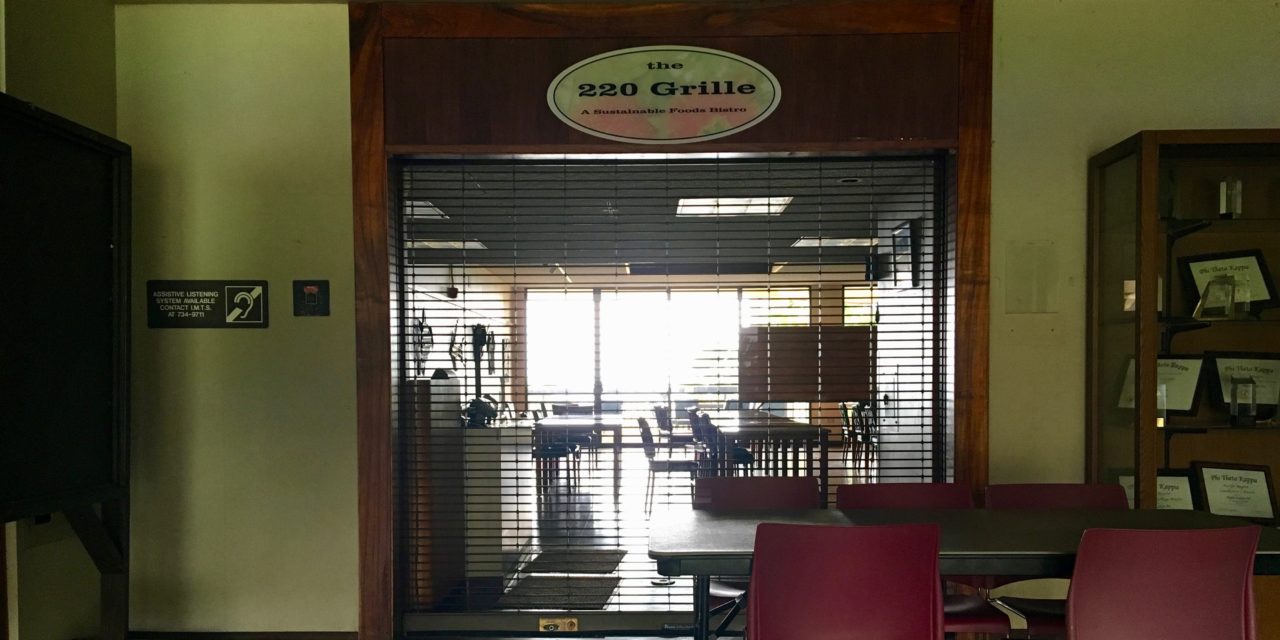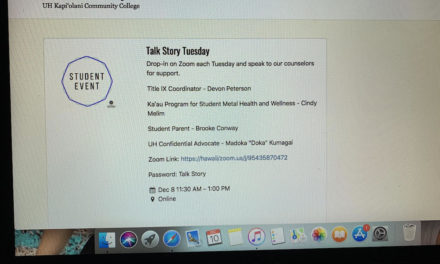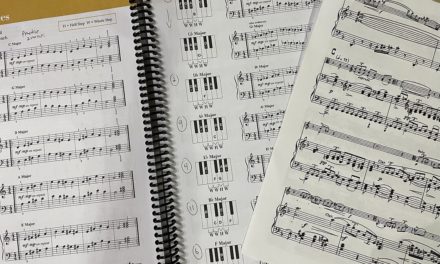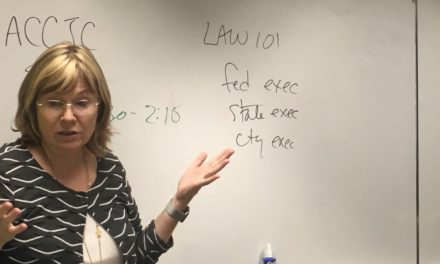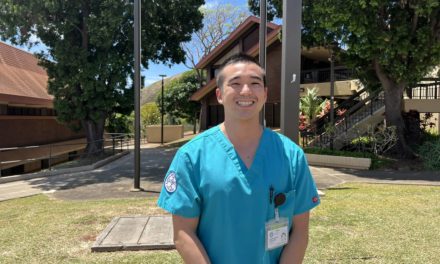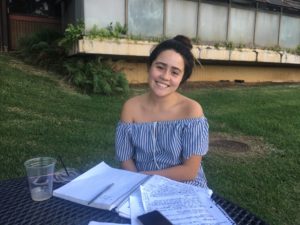By Sarah Hendrix | Staff Writer
KCC’s 220 Grille provides the perfect venue for real-life, hands-on experience for three classes in the Culinary Arts program.
CULN 160, the Dining Room Service class, are students from Associate Professor Aaron Chau’s class who operate the front-of-house. Professor Alan Tsuchiyama teaches the CULN 130, the Intermediate Cookery class that prepares all of the food items. Lastly, lab Instructor John Santamaria teaches CULN 271, Purchasing and Cost Control Lab, where students experience handling the cashiering of 220 Grille.
At 220 Grille, students are taught the basics of food preparation, cooking, serving, sustainability and interacting with customers on a day-to-day basis. Specifically in CULN 130, Tsuchiyama hopes that students will gain critical skills that are taught through the continued practice of working in a kitchen setting.
“At the end of the day when they leave this class, when they leave this school, they need to be able to taste things and analyze,” he said. “This is where the critical thinking comes in where they [students] need to analyze and see, ‘Do we need more salt? Or not need more salt?’ … They need to start thinking with their taste buds.”
220 Grille, located in the ʻŌhia building, will re-open again Tuesday, April 3, for KCC students, staff, faculty and visitors. The hours of operation are Tuesday-Thursday from 11:00 a.m. until 12:30 p.m. 220 Grille will be open from April 3-26.
CULN 160 is a requirement for all students enrolled in Culinary Arts. Students are taught dining room service from fine dining to casual dining. The course encompasses all aspects of the front-of-house service. Students who take the class spend about one-third of their time in CULN 160 at 220 Grille learning the art of fast-paced dining. Students spend another portion of their time practicing in Ka ʻIkena dining room, which is used for upscale service. In contrast to 220 Grille, which provides a casual and fast-paced food service component. Students are rotated between both restaurants to learn both types of service.
“At 220 Grille it is more fast paced,” said Chau. “The order taking and the service are very fast paced. So the student has to organize and prioritize. … At 220 Grille whenever the order is up, we serve.”
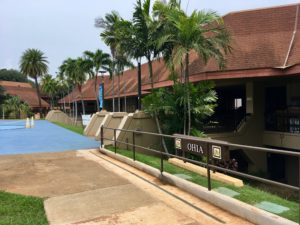
220 Grille is located in the ‘Ohia building near the cafeteria. (Photo by Sarah Hendrix)
Ashley Velasco, 19, is in her fourth semester in the Culinary Arts program. Currently she is enjoying the skills she is learning while in CULN 160 and has finished her time in 220 Grille. Working in 220 Grille has taught Velasco the importance of being quick on her feet in the restaurant industry and how to communicate with guests and fellow workers.
“I learned how to work with what I had, the minimum space I had,” she said. “Service was a major part of it, including the prep. The prep and service were two different phases, you had to be ready and then service was ‘go all out.’ If you’re not ready? Oh well, you better be ready in a couple of minutes. When working in the front of the house it was about hospitality and being kind to the guest. I learned to interact with the guest and try to communicate with the back of the house. That was the hard part, if something doesn’t go through it’s your fault sometimes. So you have to know how to professionally deal with it.”
When Velasco finishes with the Culinary Arts program she hopes to start a career in the hotel service industry. She appreciates the hands-on experience she gained while working at 220 Grille, and knows that the skills she has learned will help her in her future career.
“I enjoyed the fast-paced environment [of 220 Grille]; it kept me on my toes,” Velasco said.
Tsuchiyama is currently teaching CULN 130 and has been teaching the course on and off for 18 years as the head chef. The purpose of the course Tsuchiyama teaches is to incorporate all of the fundamental skills the students have already learned and put them to use at 220 Grille in a real restaurant setting.
It is an 8-week class that students attend every day. They spend one day in class lectures and the rest of the week learning to prepare their food and cook it in 220 Grille. Students are taught American regional cuisine and practice preparing a variety of dishes such as: Paniolo Sirloin Steak, Fish and Poi, and Pan Fried Calamari Steak with Herbed White Wine Cream Sauce.
“One of the popular dishes here in the satay station is a calamari dish. In fundamentals they learn to bread and they learn to panfry,” said Tsuchiyama. “They make the stock first to make the sauce. Then they make a white wine sauce. Then they use their knife skills to prep all of the garnishes for the sauce. This includes slicing mushrooms, slicing and dicing tomatoes and some other garnishes that go in like edamame and sea asparagus. Because we are sustainable we try to include local ingredients, like sea asparagus is local, our tomatoes are all local. So we make a sauce and put it on the dish and it is served with mashed potatoes.”
As part of the program, students are taken to a fish auction to know how fishing works in Hawaiʻi and how commercial fishing is made sustainable. They are taught the importance of sustainability in cooking through composting and how to be more sustainable in a restaurant setting. All of the waste created in class gets composted and CULN 130 also takes the KCC cafeteria’s waste and composts for them.
“Because of this class, when these students leave to go to other classes, because they already know how to compost it just continues on,” Tsuchiyama said. “Every class composts now, which is great because it reduces the landfill and it makes great compost for our gardens and other people’s gardens. So it’s a win, win, win all the way around.”

